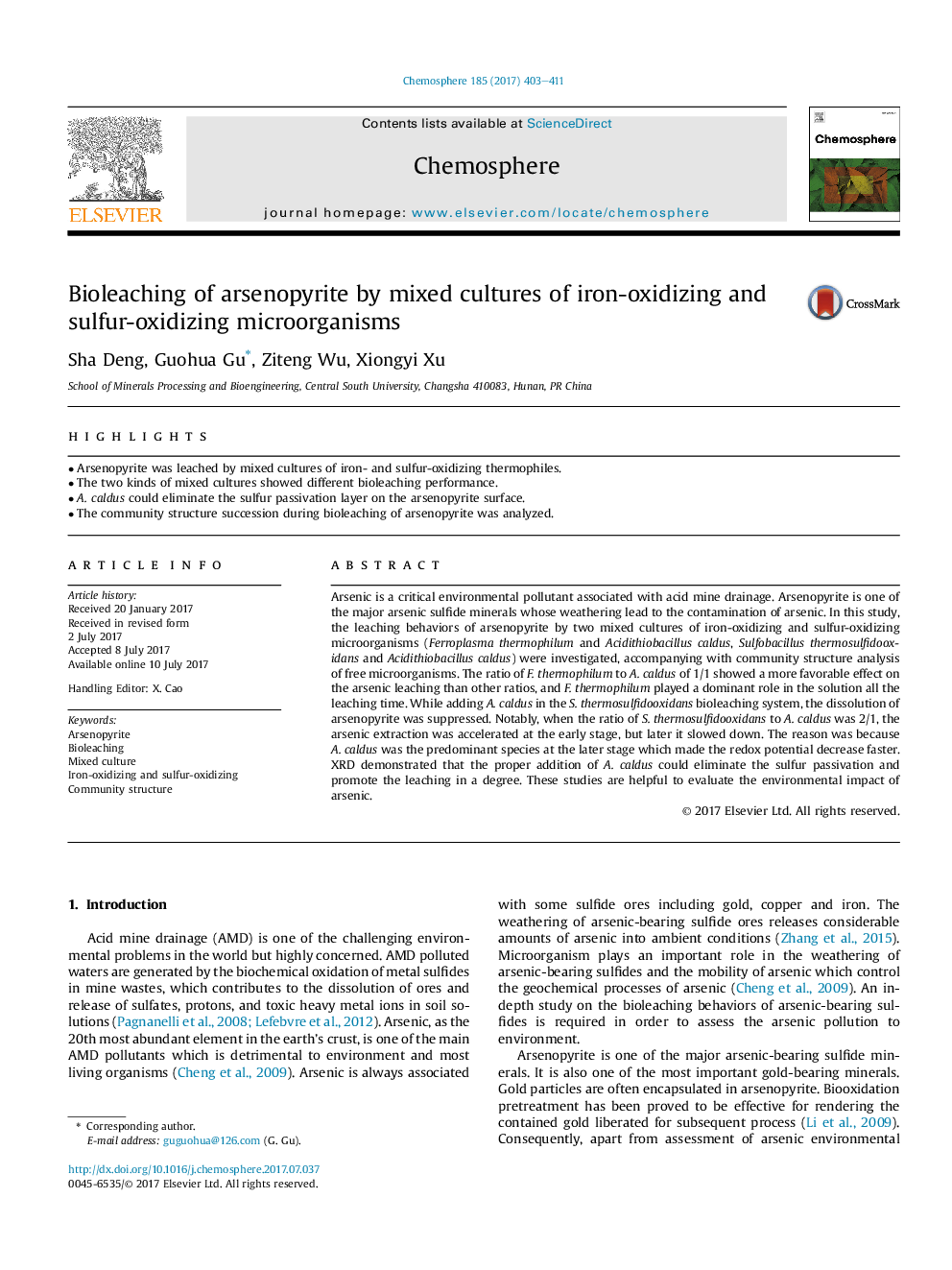| کد مقاله | کد نشریه | سال انتشار | مقاله انگلیسی | نسخه تمام متن |
|---|---|---|---|---|
| 5746695 | 1618786 | 2017 | 9 صفحه PDF | دانلود رایگان |

- Arsenopyrite was leached by mixed cultures of iron- and sulfur-oxidizing thermophiles.
- The two kinds of mixed cultures showed different bioleaching performance.
- A. caldus could eliminate the sulfur passivation layer on the arsenopyrite surface.
- The community structure succession during bioleaching of arsenopyrite was analyzed.
Arsenic is a critical environmental pollutant associated with acid mine drainage. Arsenopyrite is one of the major arsenic sulfide minerals whose weathering lead to the contamination of arsenic. In this study, the leaching behaviors of arsenopyrite by two mixed cultures of iron-oxidizing and sulfur-oxidizing microorganisms (Ferroplasma thermophilum and Acidithiobacillus caldus, Sulfobacillus thermosulfidooxidans and Acidithiobacillus caldus) were investigated, accompanying with community structure analysis of free microorganisms. The ratio of F. thermophilum to A. caldus of 1/1 showed a more favorable effect on the arsenic leaching than other ratios, and F. thermophilum played a dominant role in the solution all the leaching time. While adding A. caldus in the S. thermosulfidooxidans bioleaching system, the dissolution of arsenopyrite was suppressed. Notably, when the ratio of S. thermosulfidooxidans to A. caldus was 2/1, the arsenic extraction was accelerated at the early stage, but later it slowed down. The reason was because A. caldus was the predominant species at the later stage which made the redox potential decrease faster. XRD demonstrated that the proper addition of A. caldus could eliminate the sulfur passivation and promote the leaching in a degree. These studies are helpful to evaluate the environmental impact of arsenic.
Journal: Chemosphere - Volume 185, October 2017, Pages 403-411